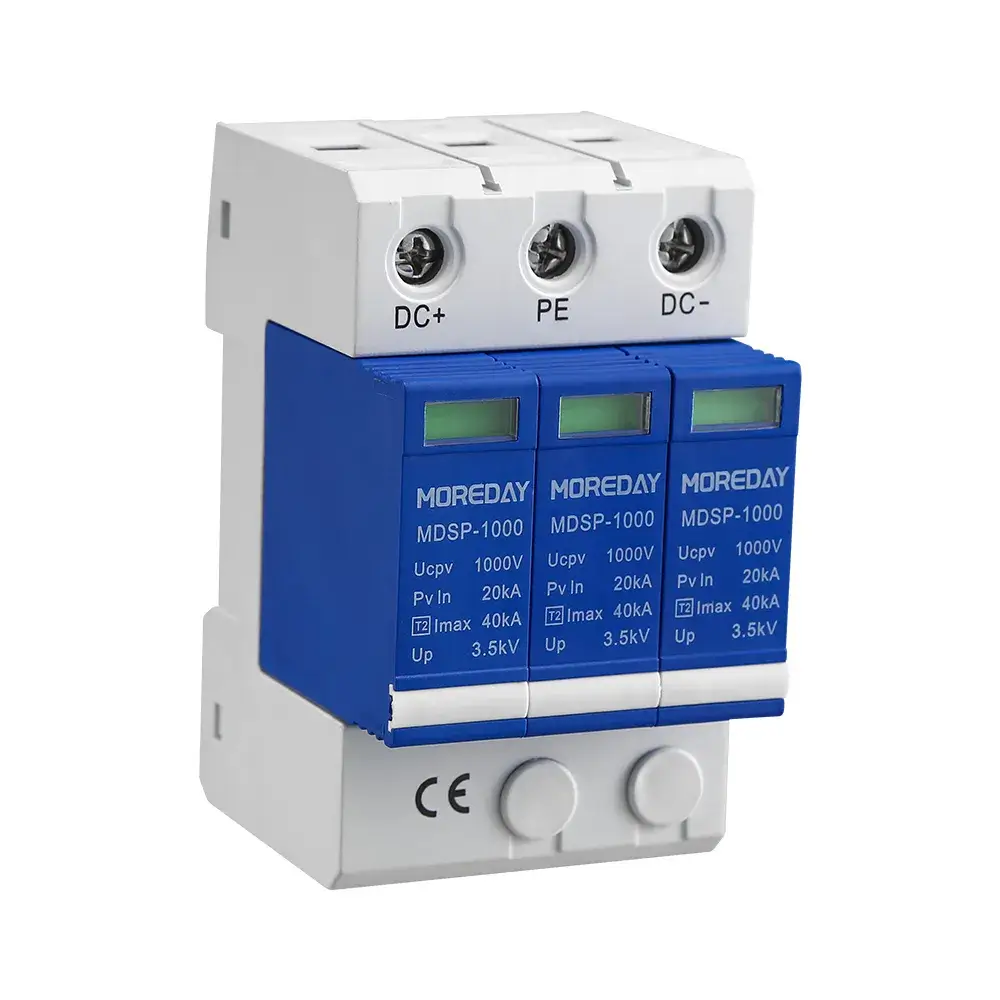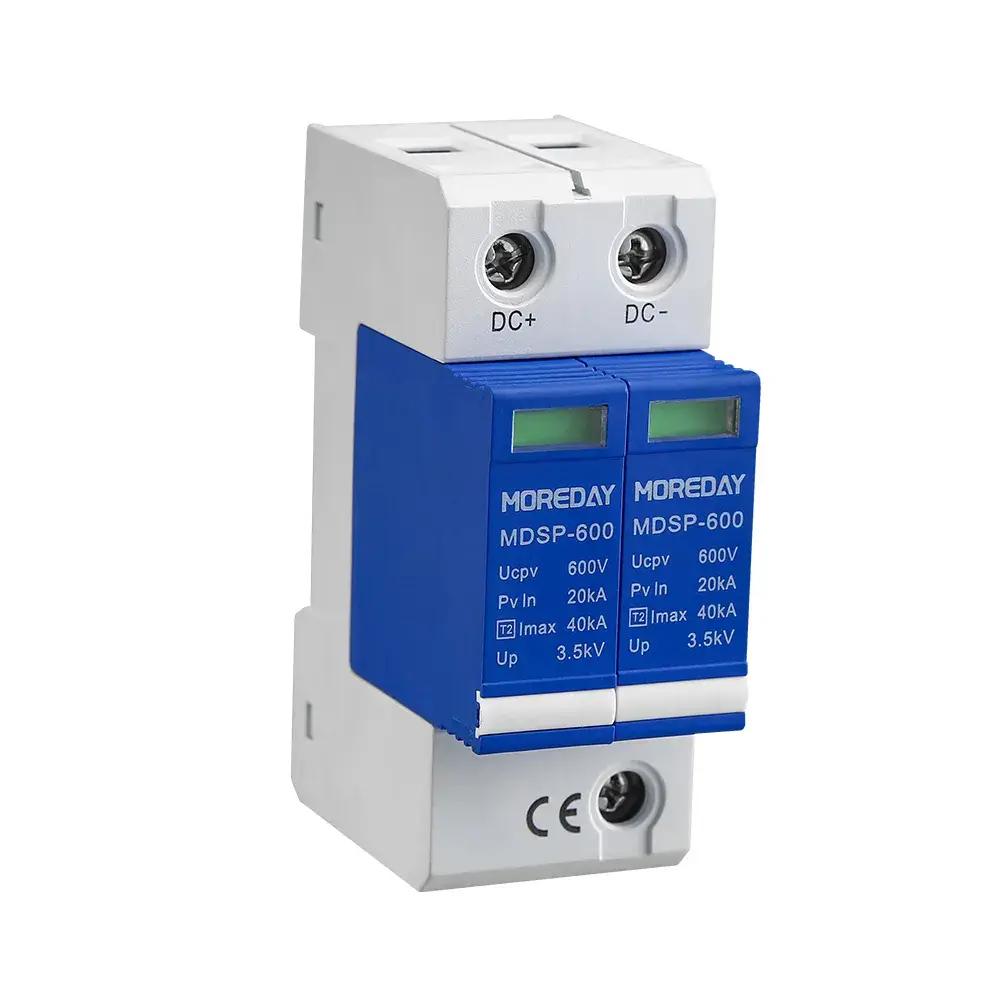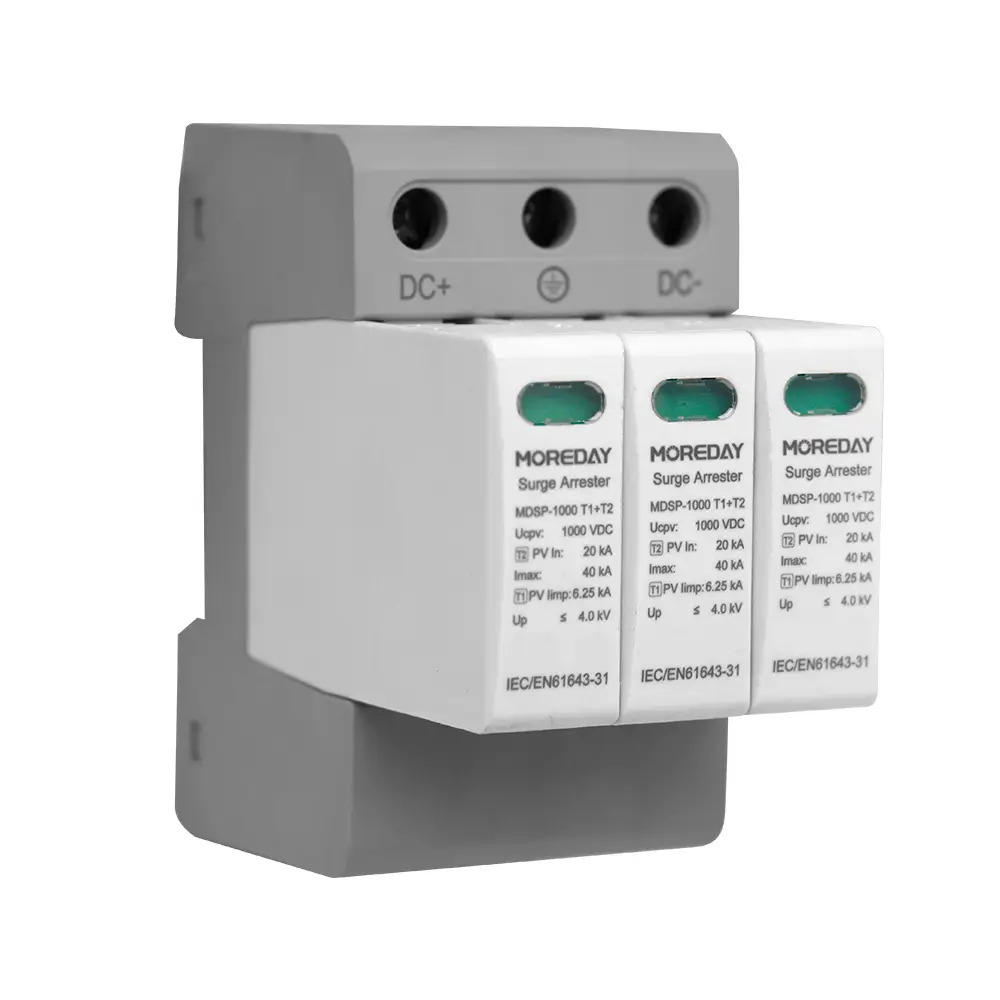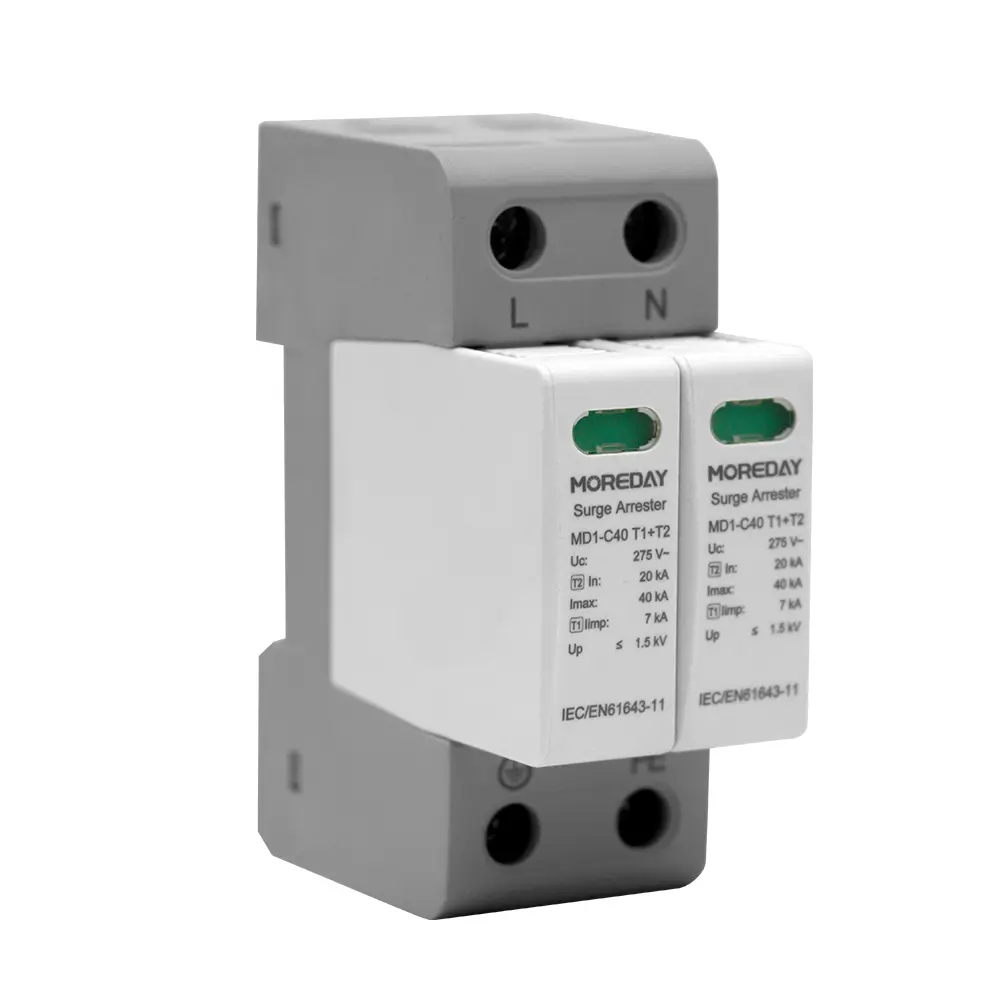SURGE PROTECTIVE DEVICE
LEAN MANUFACTURING EXPERT
With cutting-edge design capabilities, our surge protectors are equipped with high-pressure-sensitive resistors that react at nanosecond speeds, effectively controlling the impact of lightning strikes on your PV system. Trust in our team’s expertise, and let us provide you with innovative and cost-effective surge protector solutions tailored to your brand’s specific needs.
With over 20 years of experience, our team is committed to delivering superior-quality products that exceed your expectations. Our DC surge protective devices come with a 3-year warranty period that includes comprehensive support and free replacements, ensuring the long-term security of your brand.
Don’t wait any longer; contact our team today and take advantage of our unparalleled expertise and commitment to excellence. Protect your PV system from power surges with Moreday’s modular surge protective devices.
SURGE PROTECTIVE DEVICE
Product Gallery
Our surge protectors are designed to provide robust and reliable surge protection to keep your photovoltaic system running smoothly and efficiently. Your solar equipment and inverter are well protected, reducing the risk of downtime and costly repairs.
Industry-leading design and protection technology can effectively prevent lightning damage and manage system voltage and current up to 600 volts.
The SPD MD1 series type 2 surge protectors are designed for installation at the service entrance of low-voltage systems or close to sensitive equipment for protection against transient overvoltages.
The SPD series of type 2 surge protectors are characterized by a lightning current waveform of 8/20 µs.
T1+T2 dc surge protector device spd up to 1000 v dc for photovoltaic PV or solar system, independently tested safety through TUV and CB approval.
The Din rail T1+T2 AC-type surge protective device (SPD) can protect all electrical installations from lightning strikes by discharging the current generated by lightning surges and preventing it from spreading to equipment.
REPLACEABLE PLUGGABLE MOV MODULE
To ensure optimal and uninterrupted performance, our surge arrestors are comprised of a foundational component and three plug-in high-energy MOV protection modules. These advanced modules are equipped with remote signaling contacts for effortless device monitoring as well as thermal disconnect mechanisms to enable easy fault indication.
In order to safeguard your equipment from the damaging effects of power surges, it is crucial to have a reliable surge protection system in place. Our surge arrestors are designed to meet and exceed industry standards, providing unparalleled protection against power spikes and electrical disturbances.
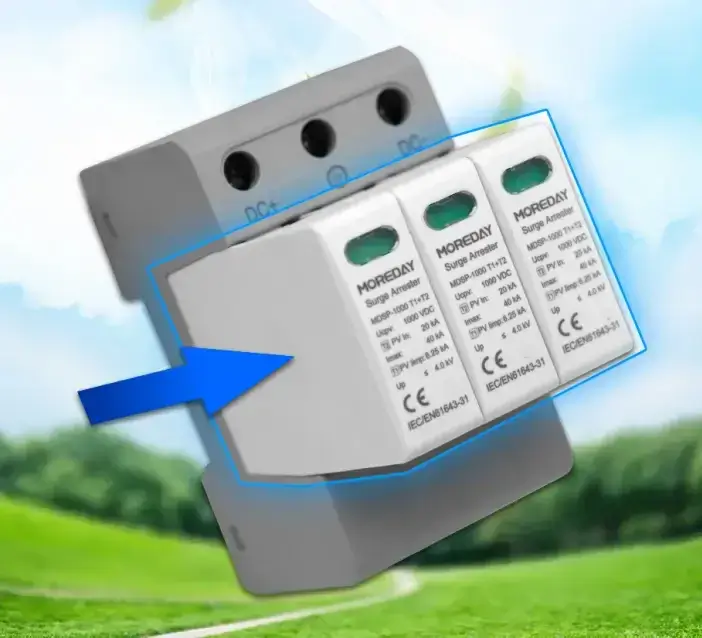

COMPLETE MOLDING WORKSHOP
An industry-leading mold shop, MOREDAY conducts mold development testing under industry standards using established parameters and protocols. It can ensure that we can provide customers with complete, customized services.
Material R&D Laboratory
We have created a rare product material research and development laboratory in the industry, which provides great support for product reliability. Experts will find suitable new materials for new products. Active research and development have also made us a high-tech enterprise in China.

Type 2 surge protectors are installed on the load side of the service circuit breaker, mainly used to handle surges in the power grid and protect downstream equipment from damage.
Type 3 surge protectors are installed close to the equipment to protect specific terminal equipment, and are particularly effective in resisting sudden high voltages caused by electrical switches.
Through these different types of surge protectors, Moreday can provide a comprehensive electrical system protection solution, effectively avoiding equipment damage or data loss caused by voltage mutations, and ensuring that users’ systems run safer and more stable.
Type 2 surge protectors: Usually installed after the main circuit breaker, inside the distribution box. They are designed to handle surges from the power grid or internal electrical system, protecting equipment connected to the distribution system.
For DC applications, especially when using solar or wind power systems, SPDs can be installed on the DC side to prevent potential damage to sensitive equipment due to sudden voltage changes. The selection of the appropriate SPD should be based on the specific voltage requirements and circuit characteristics of the system to ensure maximum protection.
The performance and safety of SPDs (surge protection devices) must meet strict international and regional standards to ensure their reliability and effectiveness when subjected to voltage surges. The main standards include UL 1449 and IEC 61643-11.
UL 1449 is the safety standard for surge protection devices in the US market, which details the ability of surge protectors to cope with high-energy surges and their stability in extreme electrical environments.
IEC 61643-11 is an international standard that is mainly used to evaluate and test the performance of low-voltage surge protectors, including their withstand voltage limits and energy absorption capabilities.
These standards ensure that surge protection devices operate reliably under surge conditions and provide the necessary safety functions (NEMA Surge Protection Institute).
The voltage protection level (VPR) is a key indicator of surge protection device (SPD) performance. It refers to the maximum voltage value that the connected equipment can withstand after being protected by the SPD during a surge event.
The size of the VPR directly affects the safety of electrical equipment because it determines the upper limit of the voltage that the equipment can safely withstand when a voltage surge occurs. Selecting the appropriate VPR value is critical because it needs to be closely matched to the electrical characteristics of the system to ensure adequate protection without causing unnecessary equipment downtime or damage.
When selecting a low-voltage or high-voltage surge protection device, the correct VPR value can effectively prevent equipment failures caused by voltage overload. For example, for sensitive electronic equipment, selecting a lower VPR can provide more detailed protection against damage caused by weak voltage increases. Conversely, for electrical equipment that can withstand higher transient voltages, a higher VPR may be more suitable.
In addition, capacitance, grounding quality, and proper connection arrangements should be carefully considered during installation to ensure the effectiveness of the device and the safety of the system. Correct installation location and good environmental conditions are also key factors in ensuring the performance of the SPD.
Make Electricity Available To All People

